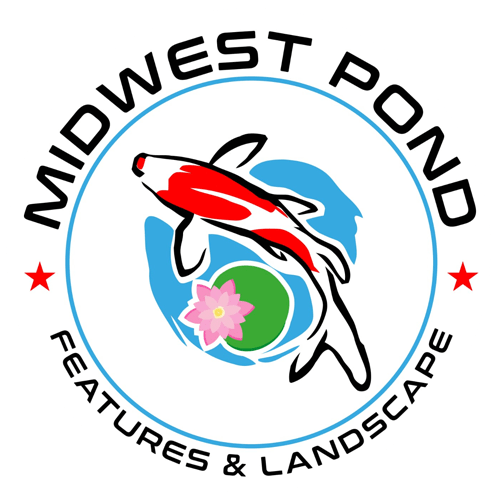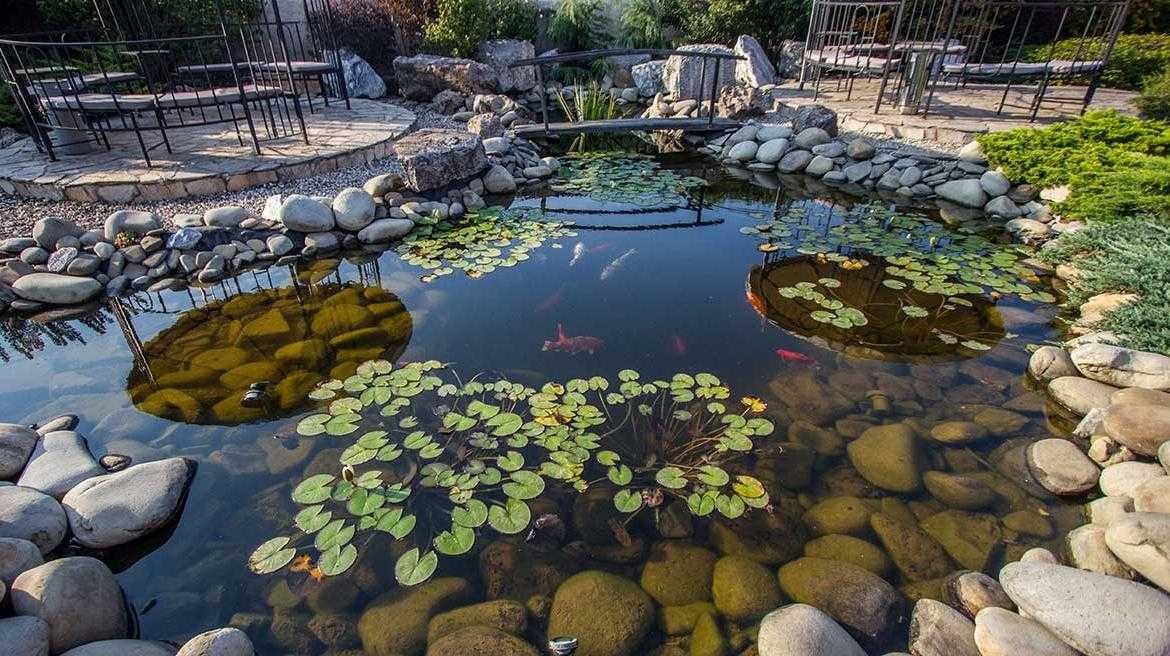(Podcast Episode)
All You Need To Know About Koi
Koi have been bred for centuries and are a beautiful and vibrant fish species. They are known for their bright colors, patterns, and peaceful demeanor, making them a popular choice for pond enthusiasts.
To add a feel of beauty and serenity to your backyard, a koi pond may be what you need. With vibrant colors and graceful movements, koi fish can bring peace and tranquility to any outdoor space. However, creating and maintaining a koi pond requires a bit of know-how. From water quality testing to regular maintenance tasks, when keeping your koi healthy and content, there are several things to consider.
In this blog, we’ll explore all you need to know about koi, including common health issues, red flags to watch out for, and the PHG method for maintaining good water quality. So, relax and sit back, and let’s dive into the world of koi.
The History of Koi
Koi, known as Nishikigoi, were first bred in Japan over 200 years ago. Originally, koi were known for their meat, but people began to appreciate their beautiful colors and patterns over time. Today, koi are famous for their ornamental value and have become a popular choice for pond enthusiasts worldwide.
Koi vs. Goldfish
Many people confuse koi with goldfish, but they are two different fish species. Here are some critical differences between koi and goldfish:
- Size: Compared to goldfish, koi grow far more rapidly, with some reaching lengths of up to three feet.
- Body Shape: Koi have a more streamlined body shape than goldfish, which are rounder.
- Colors and Patterns: Koi have a wider variety of colors and patterns than goldfish.
- Behavior: Koi are more peaceful and docile than goldfish, which can be more aggressive.
Pond Requirements for Koi
If you plan on keeping koi, having the proper pond setup is essential. These are some things to consider when building a pond for koi:
- Size: Koi need much space to swim, so your pond should be at least 1,000 gallons. The larger the pond, the better.
- Water Volume: Your pond should be deep enough to hold enough water to support the number of fish you have. A good rule of thumb is 100 gallons of water per adult koi.
- Components: A koi pond should include a water pump, filter, and skimmer basket to remove debris and maintain water quality.
- Filtration: Biological filtration components, like beneficial bacteria, are essential for maintaining water quality in your pond.
- UV: A UV sterilizer can help control bacteria and algae growth in your pond.
The Types of Koi For You To Choose From
There are many different types of koi, each with its own unique patterns, colors, and traits. Some of the most popular types include:
- Kohaku: This type of koi is characterized by its white body and red markings and is considered one of the most traditional and classic koi
- Sanke: Similar to the Kohaku, the Sanke is a tri-colored koi with white, red, and black markings. It is a very popular variety and is often known as a symbol of good luck in Japan.
- Showa: The Showa is a black koi with red and white markings. This variety is known for its aggressive personality, making it an excellent option for those who want to add a little personality to their koi pond.
- Ogon: The Ogon is a solid-colored koi with a metallic shine that is available in various colors, such as gold, platinum, and orange. They are an excellent option for those who need a more minimalist look in their koi pond.
- Asagi: The Asagi is a blue koi with red and orange underbelly markings. This variety is known for its graceful movements, making it a popular choice for those who appreciate a more elegant look in their koi pond.
Ultimately, the best koi for a koi pond will depend on your preferences and the specific conditions of your pond. It is important to research and choose koi varieties that are suitable for your climate, water conditions, and overall pond design. With proper care, your koi pond can be a source of beauty, tranquility, and joy for years to come
Water Quality for Koi
Maintaining good quality water is essential for the health and well-being of your koi. These are some things you need to know about water quality for koi:
- pH: Koi prefer a pH between 7.0 and 8.0.
- Quality Testing: You should perform water quality testing regularly to check the pH, ammonia, nitrite, and nitrate levels in your pond.
- Perform Water Quality Tasks: Regular tasks like water changes, cleaning your filter, and removing dead leaves and debris from your pond can help maintain good water quality.
- Consult a Professional: If you need to help maintain good water quality in your koi pond, it is best to consult a professional pond builder or koi consultant.
Koi Care and Maintenance
Keeping your koi healthy and happy requires regular care and maintenance. Here are some tasks you should perform regularly:
- Feed your fish koi food formulated explicitly for koi. Refrain from overfeeding your fish, which can lead to poor water quality and health problems.
- Perform Water Quality Testing: Regularly check water quality parameters to ensure your pond water is healthy for your fish.
- Perform Yearly Tasks: Each year, you should perform tasks like cleaning your filter, removing debris from your pond, and checking your water pump and equipment.
- Release Trapped Fish: Use a pole to release trapped koi in your skimmer basket or other pond parts. Trapped fish can become stressed and can cause poor water quality.
- Container Pond Water: If you have a container pond, change the water regularly to prevent poor water quality.
- Monitor Skimmer Basket: Regularly monitor your skimmer basket to ensure it works correctly and is not clogged with debris.
- Note General Behavior: Keep an eye on your fish’s behavior and note any changes, as this can indicate health problems early.
Common Health Issues with Koi
Like any living creature, koi can be prone to specific health issues. Here are some common health problems that can affect koi:
- Bacterial Infections: Bacteria can infect your fish’s body, fins, or gills, leading to health problems.
- Parasites: Parasites like flukes or ich can cause skin and gill irritation and weaken your fish’s immune system.
- Poor Water Quality: It can lead to health problems like fin rot, ammonia poisoning, and swim bladder issues.
- Size and Age: As koi grow older and more prominent, they can become prone to health problems like tumors and organ failure.
Red Flags to Watch Out For
These are some red flags to watch out for when caring for your koi:
- Gasping for Air: If your fish are gasping for air at the water’s surface, this can indicate poor water quality or low oxygen levels.
- Fins Clamped: Clamped fins can indicate stress, poor water quality, or illness.
- Discolored or Cloudy Eyes: Discolored or cloudy eyes can signify a bacterial or fungal infection.
- Sluggish Behavior: If your fish are not swimming as actively as usual, this can indicate poor water quality or illness.
- Loss of Appetite: If your fish are not eating, this can be a sign of stress, illness, or poor water quality.
Brian Connelly’s PHG Method
Brian Connelly, a koi expert, developed the PHG (Pond Health Guard) method for maintaining good water quality in koi ponds. The PHG method involves the following steps:
- Perform Water Quality Testing: Regularly check the pH, ammonia, nitrite, and nitrate levels in your pond.
- Perform Water Quality Tasks: Regular tasks like water changes, cleaning your filter, and removing debris from your pond to maintain good water quality.
- Monitor Your Fish: Monitor your fish’s behavior and note any changes, as this can indicate health problems early.
- Consult a Professional: If you need to help maintain good water quality in your koi pond, it is best to consult a professional pond builder or koi consultant.
FAQs
How often should I test the water quality in my koi pond?
You should test the water quality of your koi pond at least once a week. It will help you detect any red flags early on and take action to maintain a healthy environment for your fish.
Can koi and goldfish be kept together in the same pond?
Yes, koi and goldfish can be together in the same pond as they have similar water and habitat requirements. However, it is essential to note that koi can grow much more significantly than goldfish and may eat their smaller tank mates. So, it’s best to monitor their behavior and size when coexisting in the same pond.
Final thoughts
As we end our journey into the world of koi, we hope you have gained a deeper appreciation for these magnificent creatures and the care required to keep them thriving. Following the tips and advice in this blog, you can establish a lovely and healthy environment for your koi to succeed.
Remember to monitor your fish closely, monitor water quality regularly, and perform routine maintenance tasks to keep your pond in shape. With love and care, your koi can live for many years and provide endless joy and tranquility. So go ahead, create your backyard oasis, and enjoy the peaceful serenity of your koi pond.

